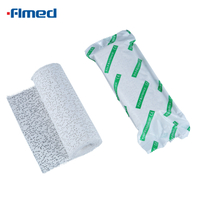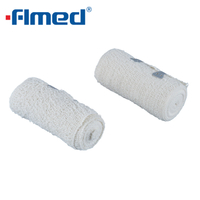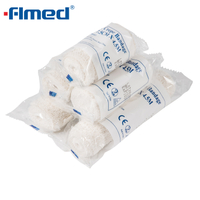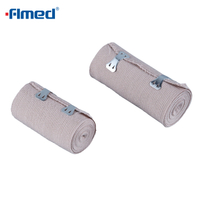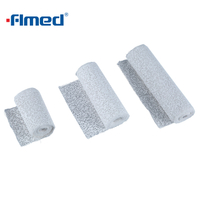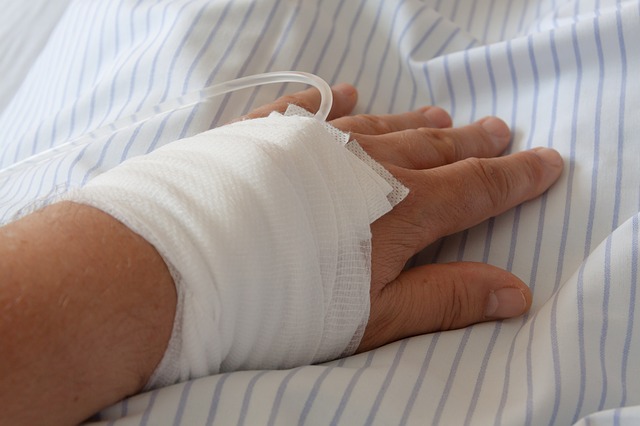
The bandage is more suitable for the treatment of hand trauma. Applications include: fractures, sprains, cuts (cuts and bites, burns), most minor hand injuries can heal on their own, but severe hand injuries require immediate medical assistance. Please continue to read below to learn when to tighten the injured hand, how to do, and when to seek medical help.
This article contains the following aspects:
1.Conditions that require you to bandage your hand
1.Fracture
When you break one or more bones, your hand is broken. The most common hand fracture is a boxer’s fracture, which occurs at the bottom of the joint, where the fingers touch the hand.
When to see a doctor: If you feel your hand is injured, see a doctor right away.
Some common signs and symptoms of a hand fracture include: obvious bending or deformation of the hand bones, injury to the hand, tenderness, inability to do so or numbness of the fingers, and even the use of over-the-counter pain medications.
When to use a bandage: bandages are sometimes used in place of fragments or plaster to limit the movement of injured hands or fingers. However, the fracture must be aligned before bandaging. Your doctor can adjust the location of the fracture to help you understand how to treat it, including whether to use a bandage.
2.Sprain
Hand sprains are caused by stretching or tearing the ligaments, the tissue that connects the hand bones. This usually affects the thumb.
When to seek medical attention: sprains are rarely an emergency, but do require treatment. If the pain or swelling on your hand worsens, see a doctor.
When to use a bandage: bandages help maintain pressure around the sprained site. Help your hands heal faster, prevent swelling and sprains, and reduce swelling. It is recommended to use special tools such as splint.
3.Strain
Your hand can be injured when a muscle or tendon in your hand is stretched or torn. This type of injury is common in the tendons that connect the wrist and forearm muscles to the fingers. Usually caused by repetitive actions, such as typing or using a mouse.
When to see a doctor: a muscle strain is not an emergency. However, you can go to your doctor to find out where your stress is coming from and how to treat it.
When to apply a bandage: like a sprain, a bandage helps maintain the pressure on the injured area. Special tools such as splints are recommended.
4.Wounds
When the skin is torn, it will be cut or cut. These types of injuries are common on hands and fingers. This is usually caused by handling sharp objects such as kitchen knives.
When to seek medical help: many hand wounds are small and self-healing. But remember, your hand has a lot of nerve endings, tendons and blood vessels in a very small space. Symptoms include punctures, massive bleeding, severe pain, large or deep wounds, open or torn skin, debris on the wound, numbness and inability to move the affected animal bite, Infected.
When to use a bandage: bandages help keep small hand wounds clean. After cleaning the small incision, cover it with gauze bandage. If the wound is small, use a plaster model. You should change the bandage every day or when the wound is wet or dirty.
5.Burns
Burn is another common type of hand and finger injury. They are caused by exposure to high temperatures, including sunlight, flames or hot matter. Other types of burns are caused by cold, chemicals and electricity.
When to see a doctor: Minor hand burns usually do not require first aid. Check for signs of severe burns as follows: dry or hard skin that looks black or has black, white or brown spots. burn area over 3 inches. If yes, seek medical attention immediately to avoid severe burns to the hand.
when to use bandages: bandages can help improve burn healing. After the burn area is cool and moist, wrap the damaged part of the hand with gauze to protect the damaged skin.
2. How to bandage your hand
After minor injury, please follow the following basic instructions. What you need: gauze bandage (wound and burn), roll bandage, safety pin or bandage clip.
Steps:1. If you are handling a hand wound or burn, wash the affected area with sterile gauze before dressing.
2. Open the roller bandage and start at the end of the inner roller of the wrist.
3. Wrap the bandage around the wrist twice. the material should be flat wrist.
4. Pull the bandage from the inside of the wrist to the top of the hand. The rolls should be next to the pinkie by now.
5. Tie the bandage to the little finger, and pull it to the index finger. then place it on the index finger and draw a diagonal line from the top of the hand to the outside of the wrist.
6. From here on, wrap the bandage around your wrist. It should be where you start to tangle on the inside of your wrist.
7. Repeat steps 4 to 6 to wrap your hands and fingers. For each new number you should keep the upper half inch. the upper part of the finger should be visible.
8. After wrapping the whole hand, secure it with a safety pin or clip.
3. Conclusion
Through this article, it is not difficult for you to find the importance of bandages in the treatment of wounds, high quality bandages for the injured is very important, our company provides all kinds of bandages with low price, welcome to contact for consultation.

 English
English
